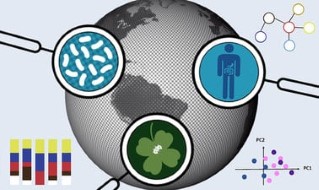Data Analysis for Genomics
Unlock the wealth of opportunities in modern genomics with our program. Learn advanced techniques to analyze and interpret genomic data using open-source software like R and Bioconductor. Acquire the skills in high-throughput technology data analysis and become a sought-after data scientist in the field. R is a required skill in 64% of data science job postings, and companies like Google and Pfizer rely on it for data analysis. Start your journey now and be part of the few in-demand data scientists.
What you will learn
- How to bridge diverse genomic assay and annotation structures to data analysis and research presentations via innovative approaches to computing
- Advanced techniques to analyze genomic data.
- How to structure, annotate, normalize, and interpret genome-scale assays.
- How to analyze data from several experimental protocols, using open-source software, including R and Bioconductor.
- R is listed as a required skill in 64% of data science job postings and was Glassdoor’s Best Job in America in 2016 and 2017. (source: Glassdoor)
- Companies are leveraging the power of data analysis to drive innovation. Google data analysts use R to track trends in ad pricing and illuminate patterns in search data. Pfizer created customized packages for R so scientists can manipulate their own data.
- 32% of full-time data scientists started learning machine learning or data science through a MOOC, while 27% were self-taught. (source: Kaggle, 2017)
- Data Scientists are few in number and high in demand. (source: TechRepublic)
Program Overview
Advances in genomics have triggered fundamental changes in medicine and research. Genomic datasets are driving the next generation of discovery and treatment, and this series will enable you to analyze and interpret data generated by modern genomics technology.
Using open-source software, including R and Bioconductor, you will acquire skills to analyze and interpret genomic data. These courses are perfect for those who seek advanced training in high-throughput technology data. Problem sets will require coding in the R language to ensure mastery of key concepts. In the final course, you’ll investigate data analysis for several experimental protocols in genomics.
Enroll now to unlock the wealth of opportunities in modern genomics.
Courses in this program
Introduction to Bioconductor
- The structure, annotation, normalization, and interpretation of genome scale assays.
Case Studies in Functional Genomics
Perform RNA-Seq, ChIP-Seq, and DNA methylation data analyses, using open source software, including R and Bioconductor.
Advanced Bioconductor
Learn advanced approaches to genomic visualization, reproducible analysis, data architecture, and exploration of cloud-scale consortium-generated genomic data.
Job Outlook
User Reviews
Be the first to review “Data Analysis for Genomics”
You must be logged in to post a review.






There are no reviews yet.